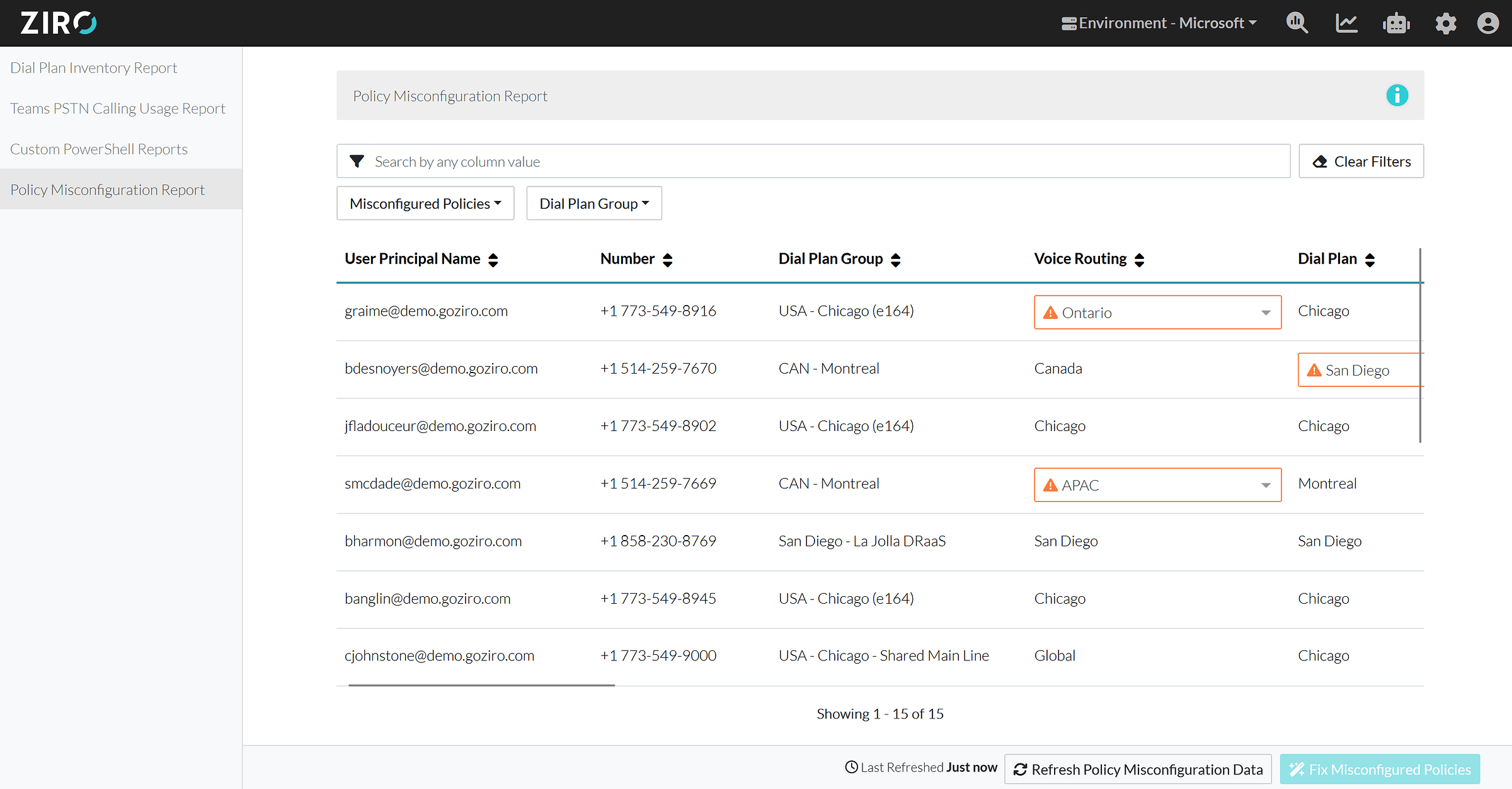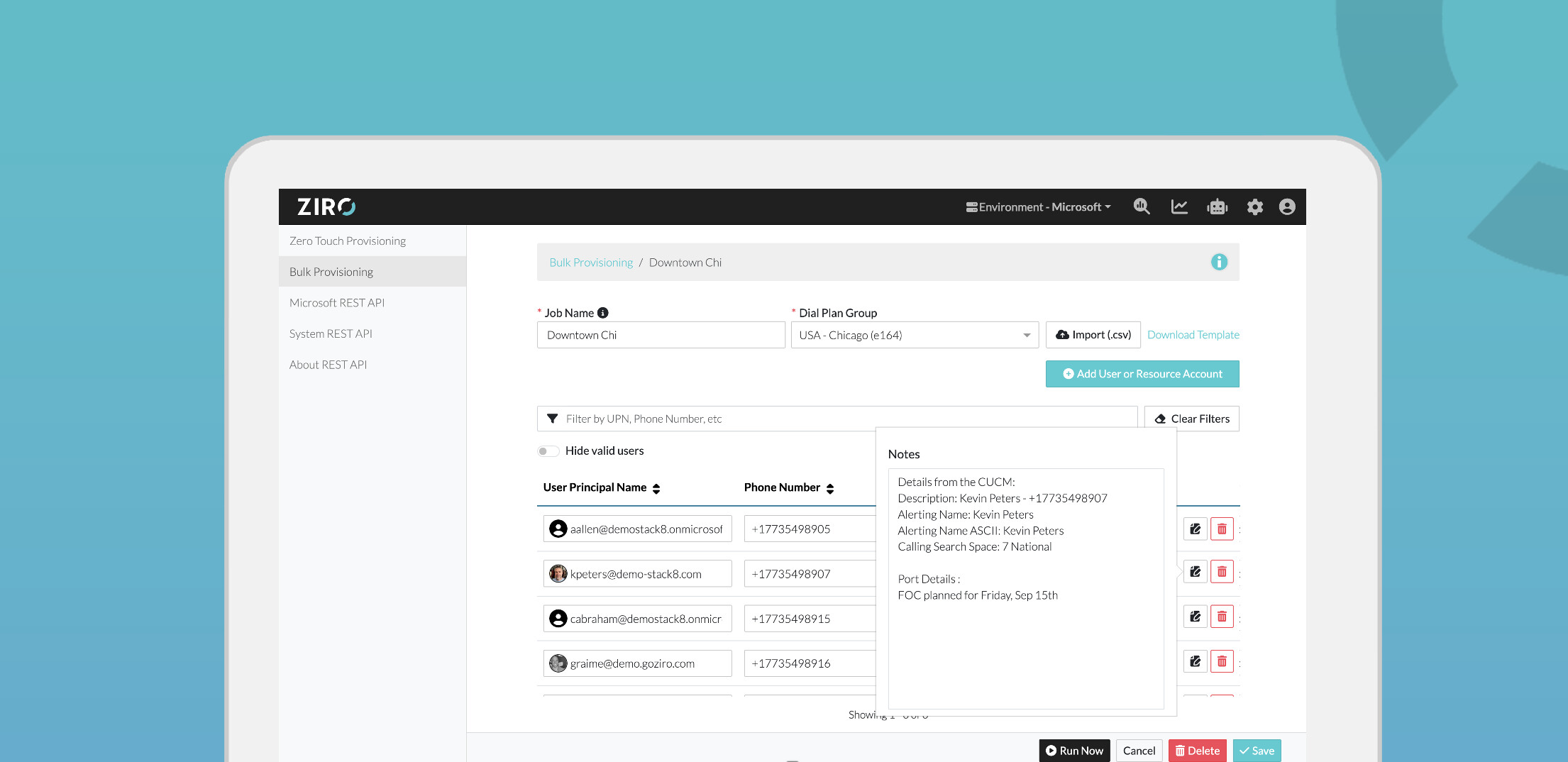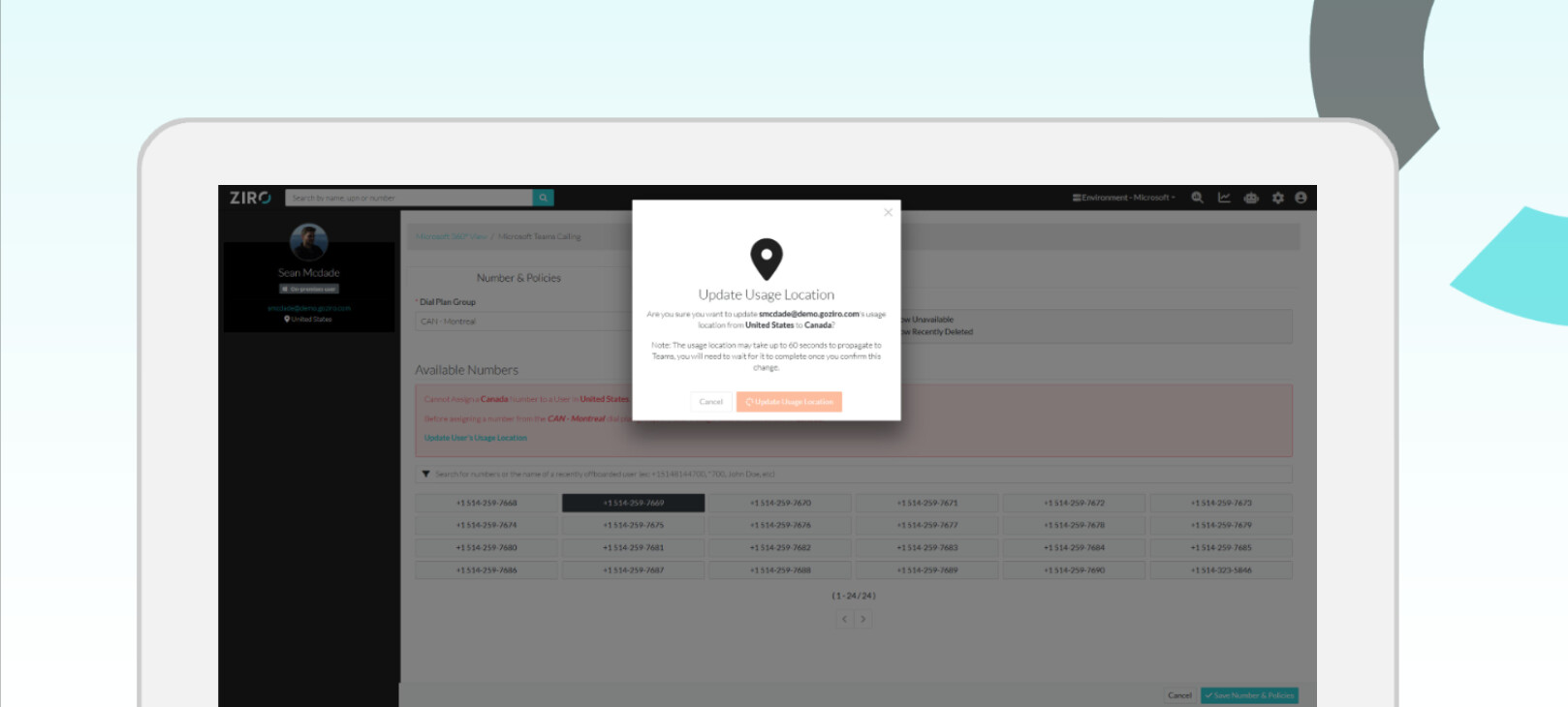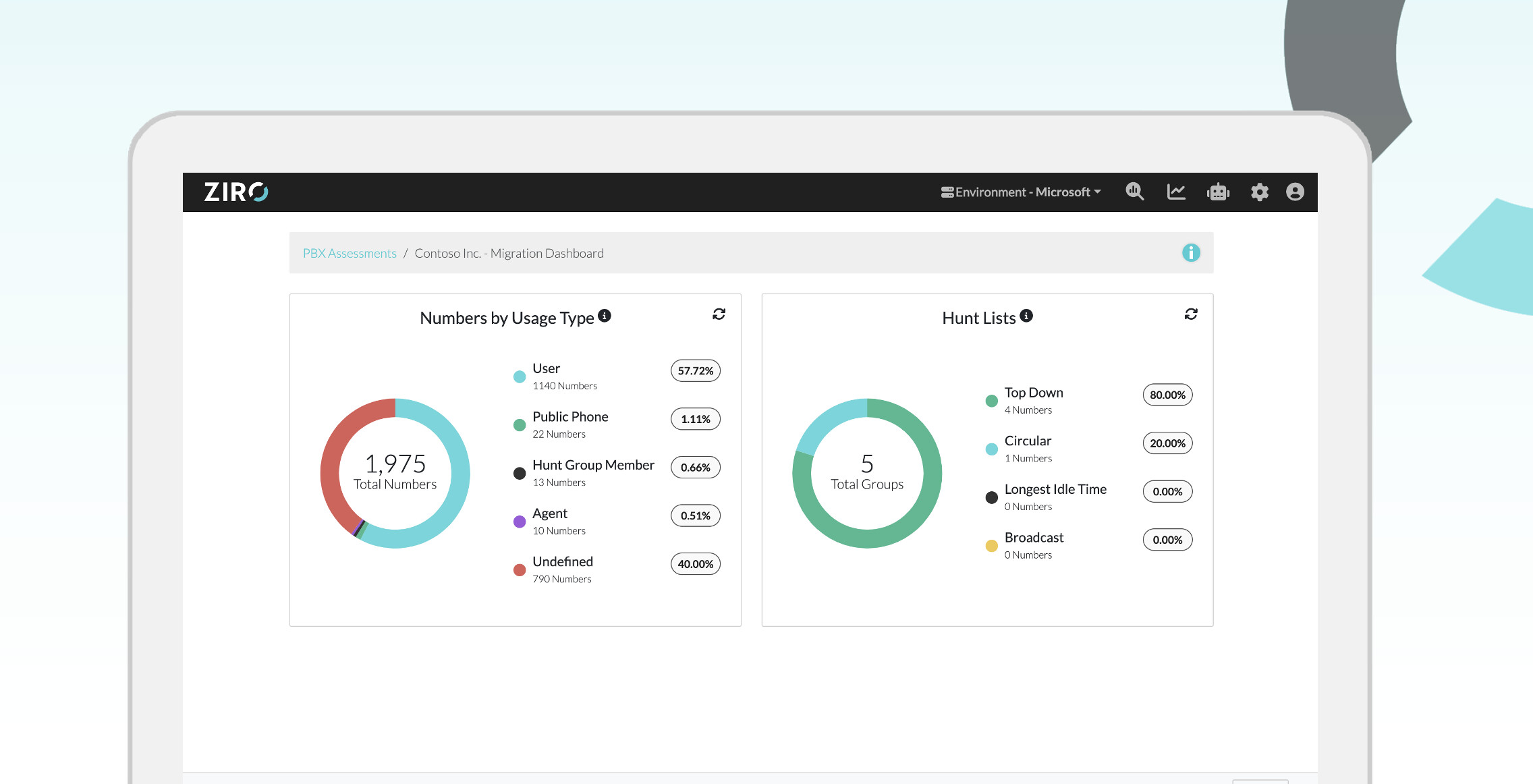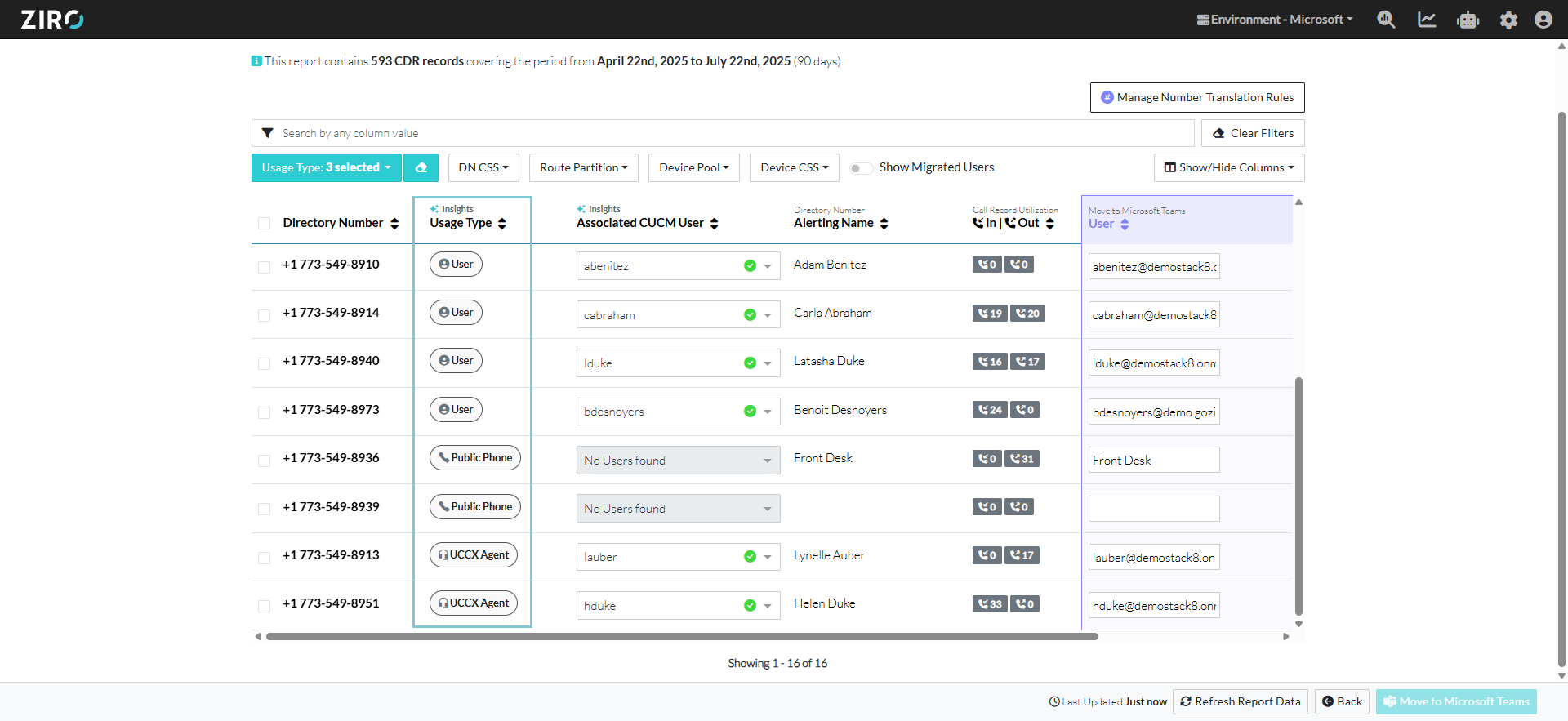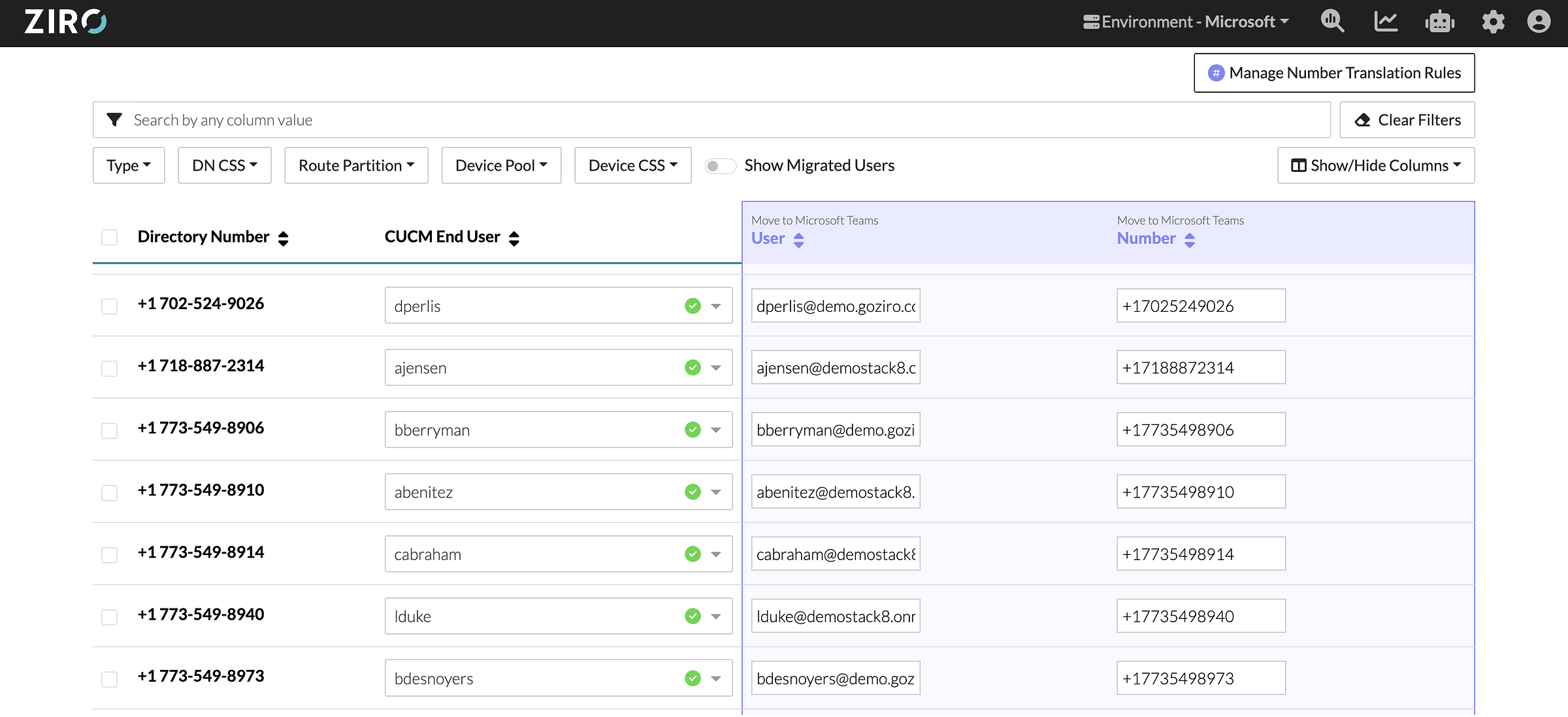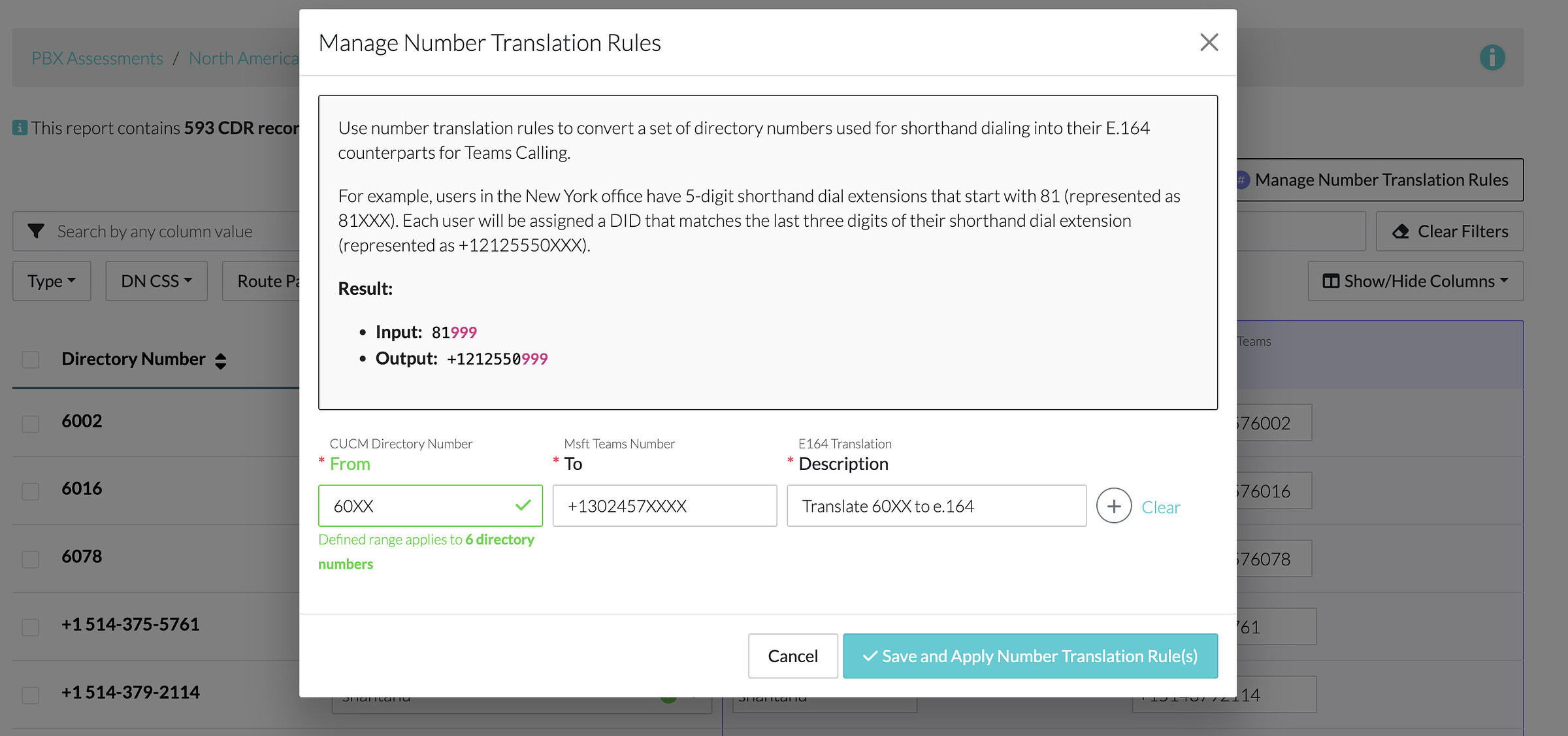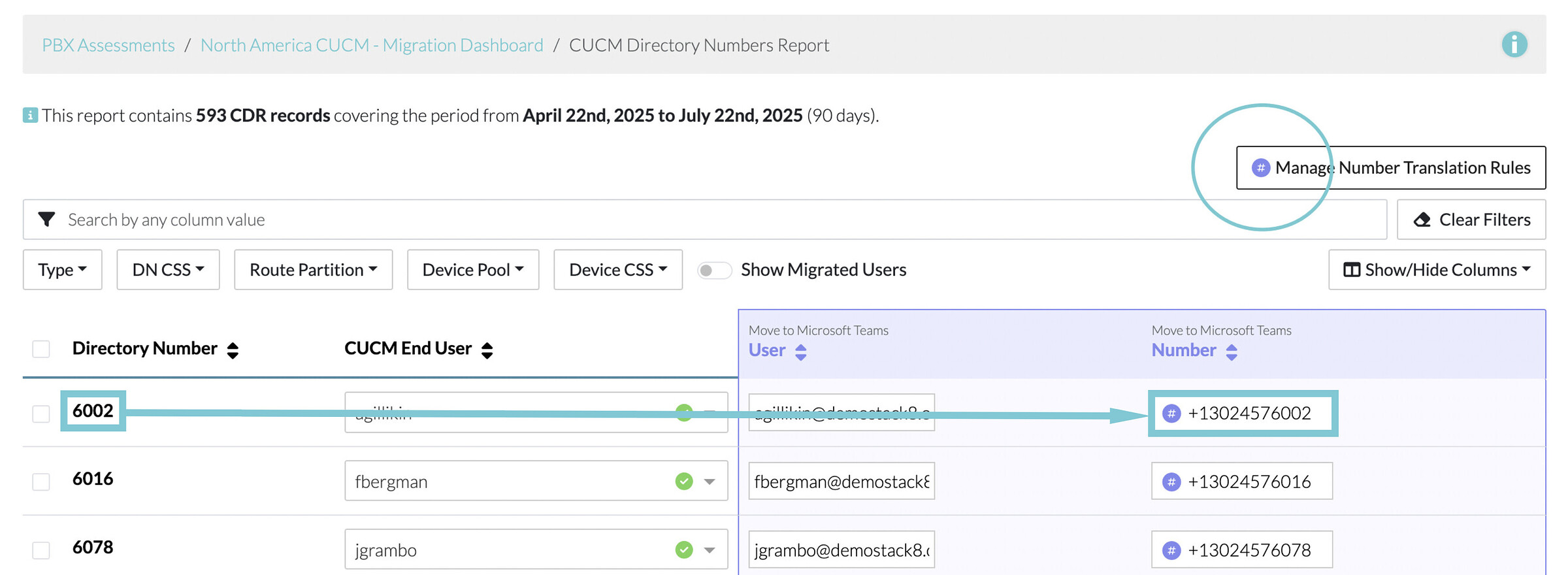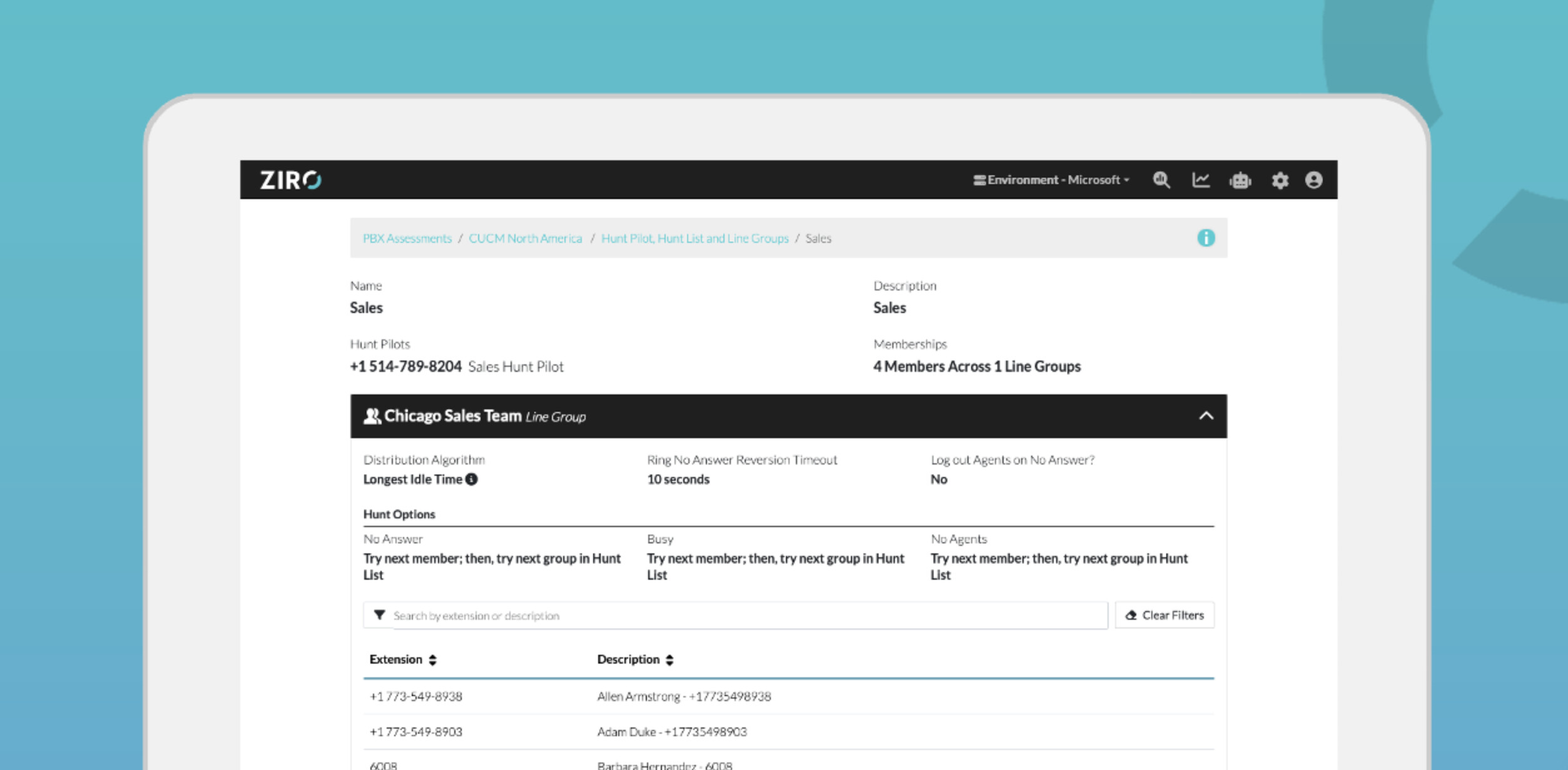Release notes for the 10.2 Release of ZIRO Platform that is planned for GA October 2025. Screenshots are subject to change.
Identify and Correct Misconfigured Policies
Our Platform now includes a Policy Misconfiguration Report to help your helpdesk and administrators to quickly detect and fix users or resource accounts with incorrect policy assignments in Microsoft Teams.
The report automatically identifies any members of a configured dial plan whose policies are misconfigured or differ from your standard.
Discrepancies are clearly highlighted, allowing you to identify and correct misconfigurations in just a few clicks — before they cause issues.
Added Intelligence (and Note Taking) to Bulk Provisioning
-
Filters to display only users who need changes/attention
-
The ability to automatically add numbers to a Dial Plan Group when numbers outside of the current range are assigned to users
-
Validations including UPN, Licenses, Phone Number Assignments and Usage Location for calling plans/Operator Connect numbers.
-
Improved support for the transferring of all number details from CUCM through Bulk Provisioning
-
Support for Admins to stage numbers and add them to existing dial plans
-
Support for transferring users who do not complete provisioning to a new or existing draft, allowing the process to be easily repeated without losing work
New Inline Notes for easier collaboration
Working across teams is simplified with inline notes that allow administrators to add context for users being staged in a draft.
Notes can be added directly to any row in the bulk job table to provide context, document migration decisions, or flag next steps, increasing visibility across your team.
Automated Provisioning with support for OC, Calling Plans & Shared Calling
You can now create jobs to provision hundreds of users across all three PSTN connectivity types:
- Direct Routing
- Operator Connect (OC)
- Microsoft Calling Plans.
Additionally, the platform now supports bulk provisioning of users for Shared Calling.
Streamlined Usage Location Management in Calling Tile
We’ve simplified resolving Usage Location mismatches between users and phone numbers by allowing helpdesk agents to view and update a user’s Usage Location directly from the Calling tile. This reduces time and complexity in number assignments.
The helpdesk can now view and update a user’s Usage Location directly from the Calling tile, reducing the time and complexity involved in number assignments.
Intelligent Insights for Your CUCM Migration to Microsoft Teams
Our Migration dashboard now provides an overview of the assessment data, along with intelligent insights that highlight key metrics and trends from your CUCM environment as you prepare your move to Microsoft Teams.
Our assessment aims to go beyond simply organizing your data—it’s powered by advanced algorithms that examine your environment and reveal meaningful insights. With this update, we’re making it simpler than ever to determine your migration path from CUCM to Microsoft Teams Phone.
-
Directory Number Usage Type: Categorizes directory numbers by how they are being used in CUCM (ex. User Lines, Hunt Group Members, Public Phones)
-
Automatically map user lines to Teams: Automatically detect and match CUCM directory numbers with end users and their Microsoft Teams Phone UPN. This eliminates the need to map CUCM user lines to Teams Phone Numbers.
Intelligent Migration of CUCM Abbreviated Dialing to E.164
Organizations migrating a CUCM with shorthand or abbreviated dialing in their dial plan can now easily map those directory numbers to e.164 for teams.
- Easily stage and validate number transformations before migration.
- An easy-to-use interface for creating number rules that match your specific environment.
- Ensure consistency and accuracy in number formatting.
- Simplify the transition to Teams by aligning with global dialling standards.
Assessment of CUCM Hunt Lists
Assessing existing CUCM Hunt Lists and their associated Pilots and members to Microsoft Teams Call Queues is tedious, error-prone, and requires a good understanding of your Cisco Unified Communications Manager (CUCM).
Our Migration module now surfaces your existing CUCM Hunt List configurations, allowing you to quickly build them correctly as Call Queues in Microsoft Teams.
We’re only getting started - This is the first of several phases. Our platform will soon enable administrators to create queues directly in Microsoft Teams from an existing assessment, allowing them to manage everything within the platform.
Fixed Bugs
- Fixed an issue where Dial Plan Exception Management was selectable when no Tenants were configured
- Fixed an Issue where Security Groups and License tile would indicate no permission on the 360 view when options were recently added to settings
- Fixed an issue where attempting to assign a Toll Free number would generate an error
- Fixed an issue where Zero Touch Provisioning Run Now button was disabled even after saving the page
- Snyk vulnerability - Function Call With Incorrect Argument Type SNYK-JS-SHAJS-12089400
- Fixed an issue where Emergency Calling Policies were not configurable on Calling Plan and Shared Calling dial plan groups
- Fixed an issue where the PSTN Utilization report would sometimes fail to generate in large environments
- Fixed an issue where User and Group Permissions were disabled on new installations
- Fixed an issue where selecting a dial group on the Calling tile for an existing user would load the previous group settings in certain conditions
- Fixed an issue where deleting the ZPM App Registration from Azure would leave the application in a broken state
